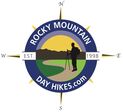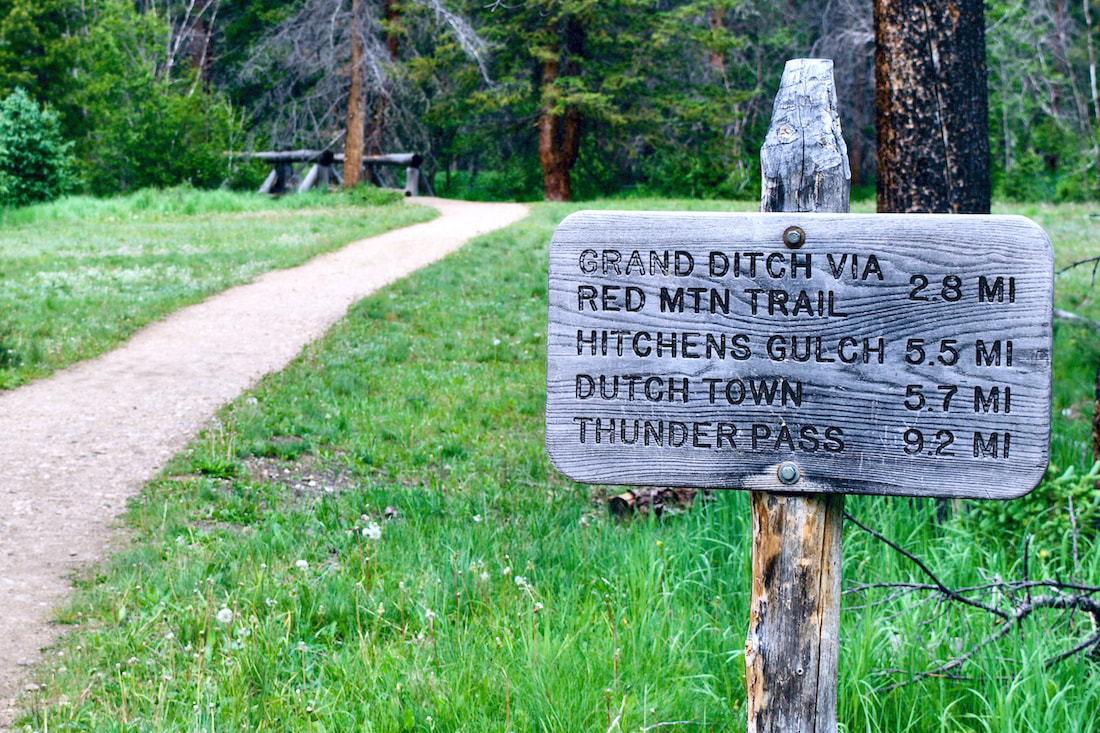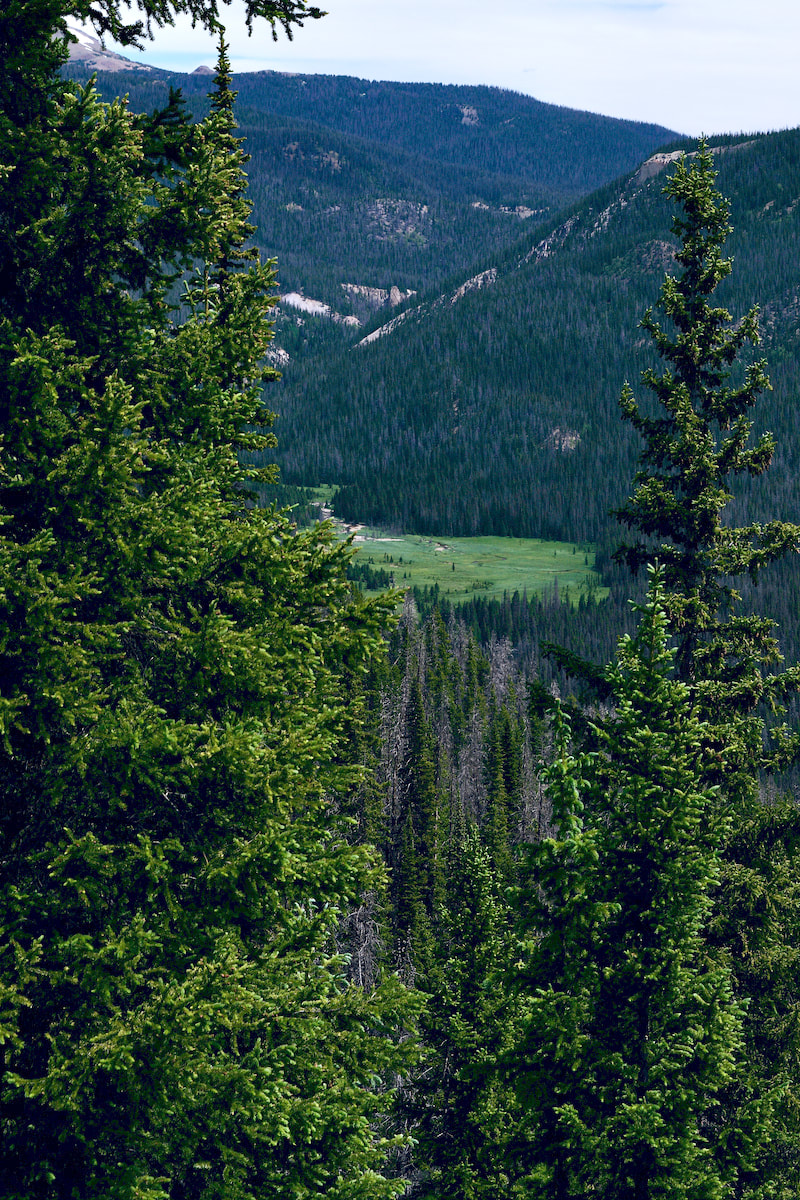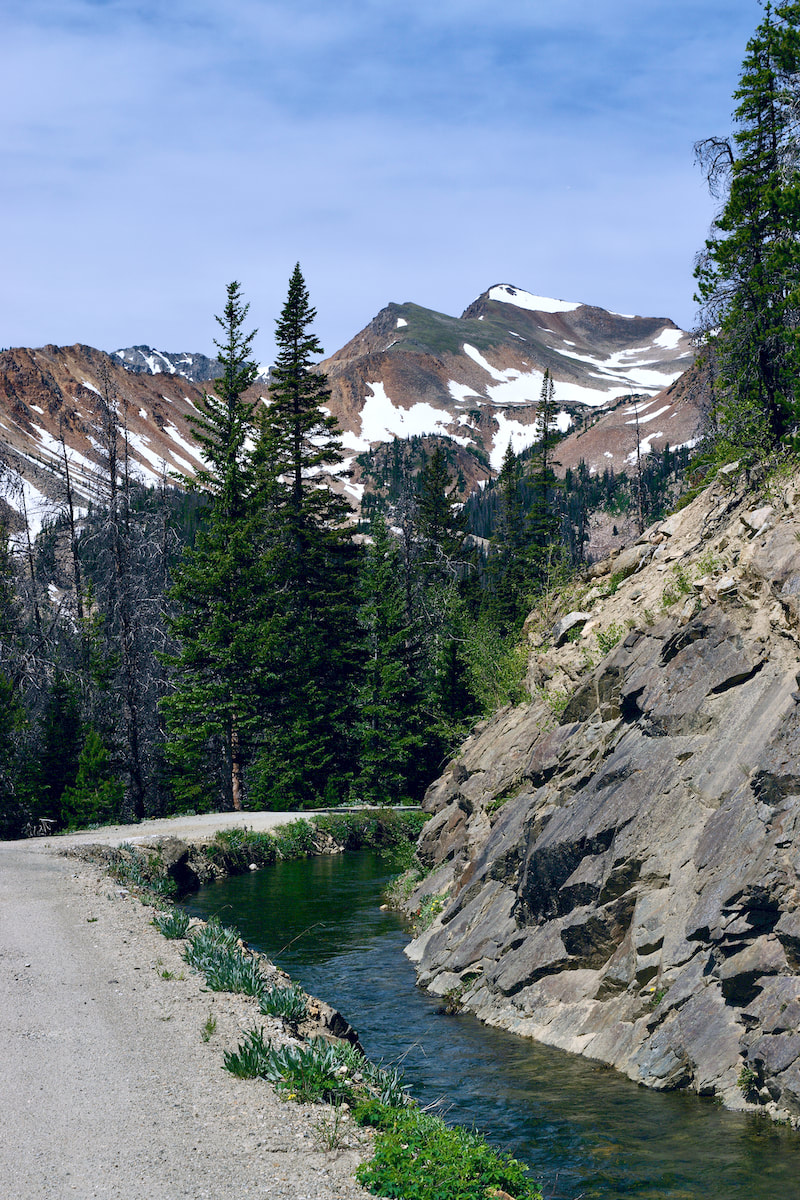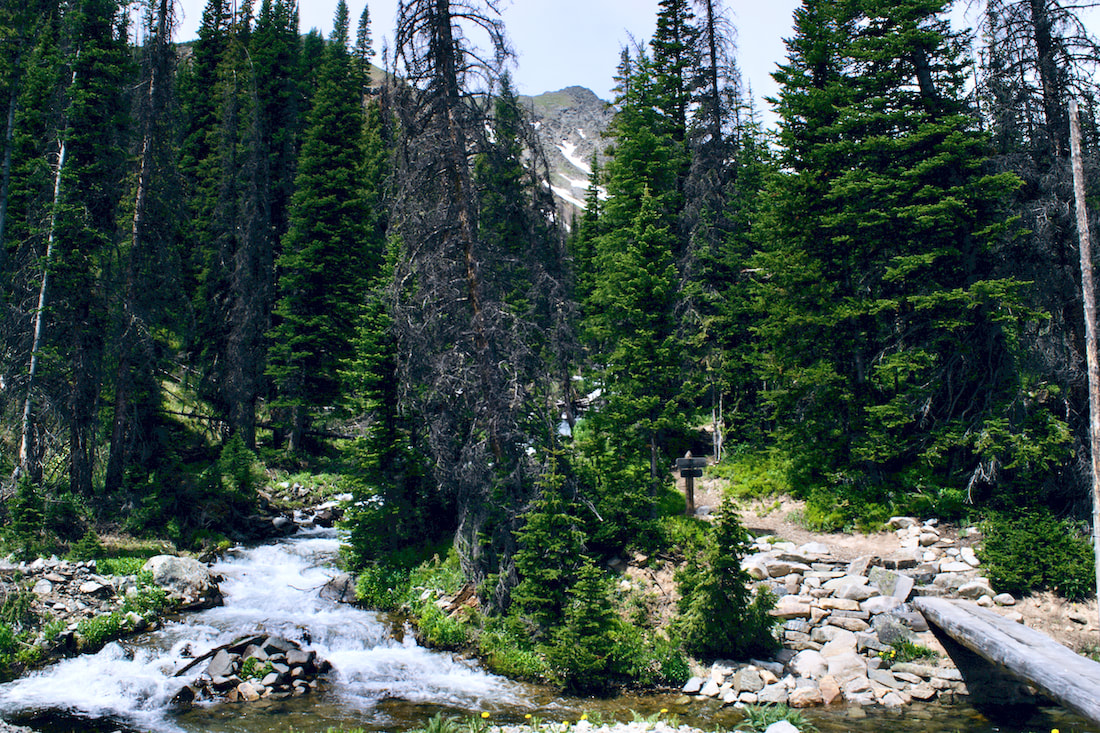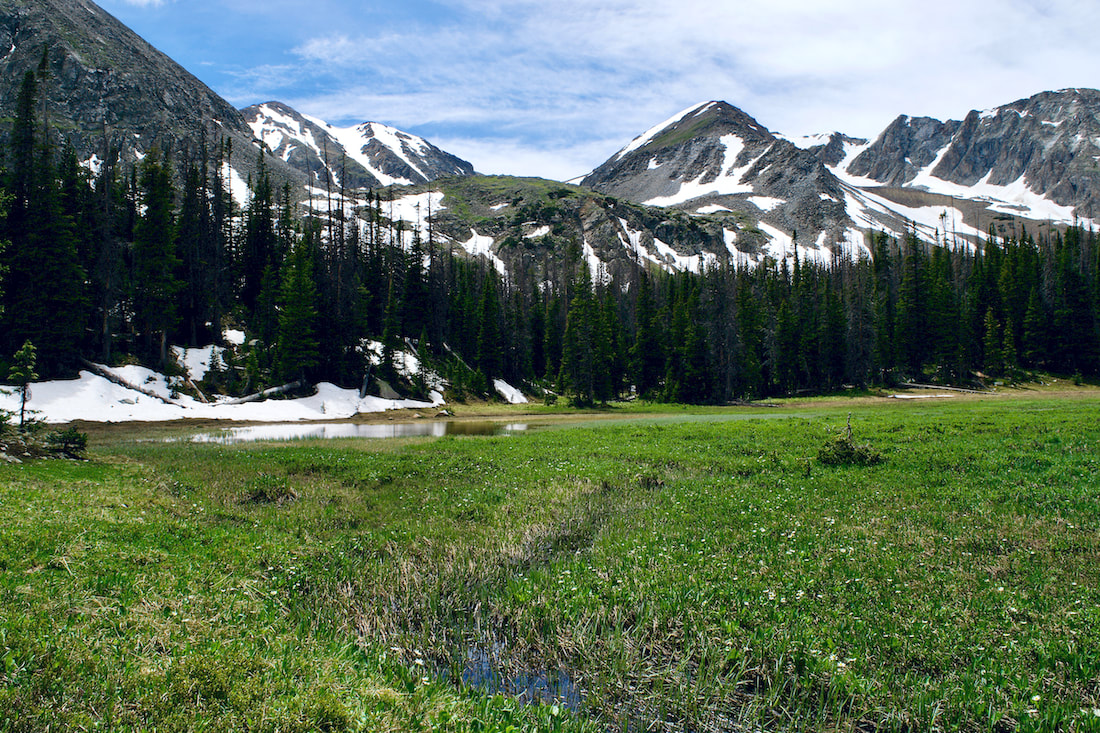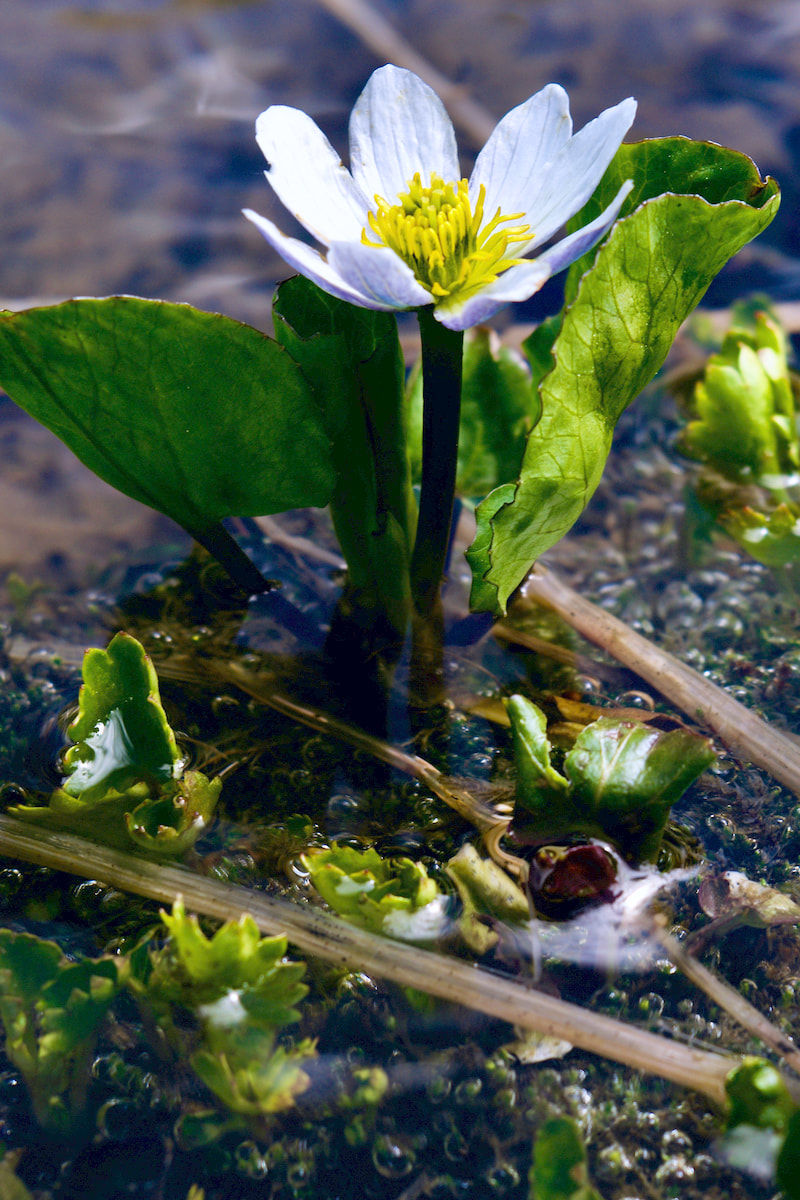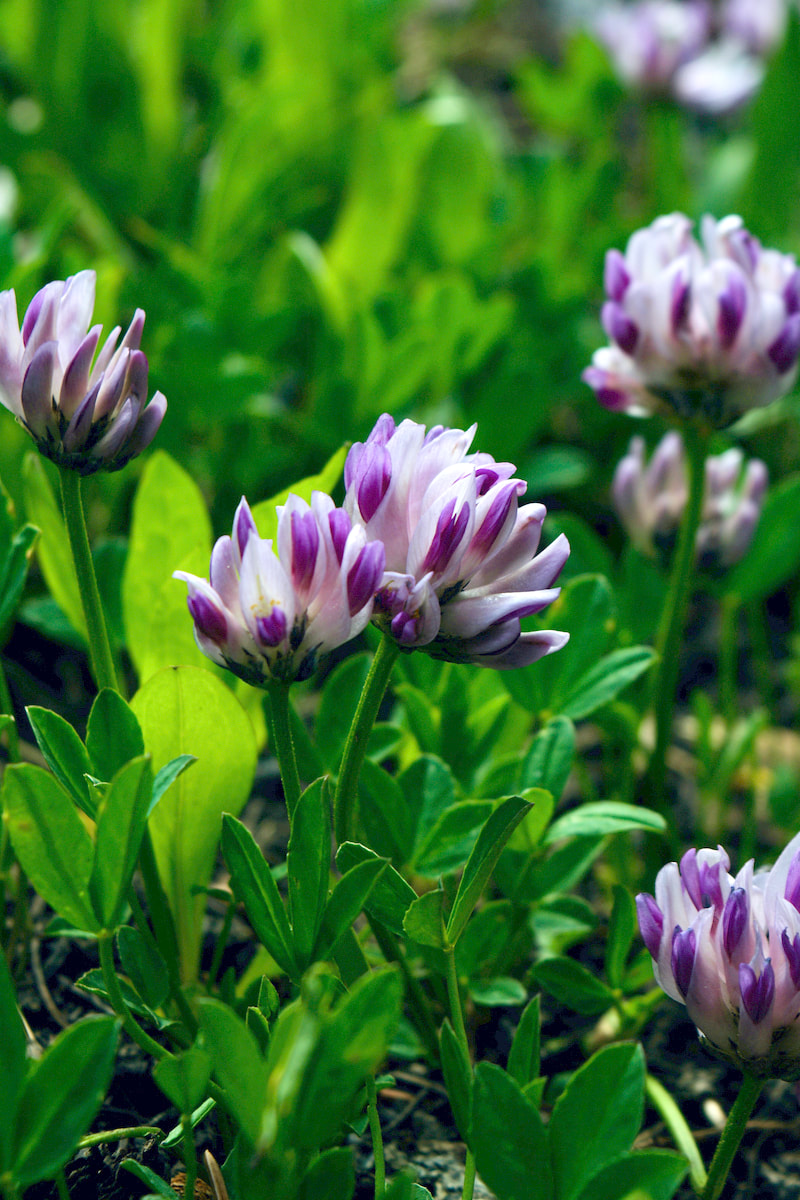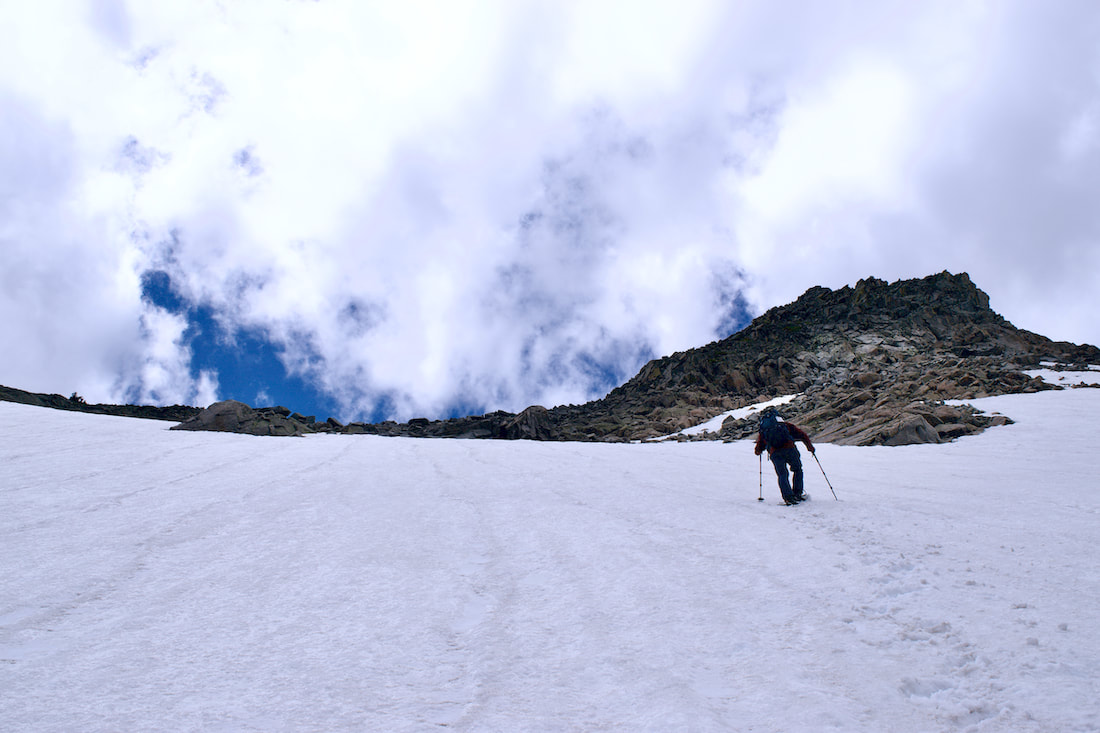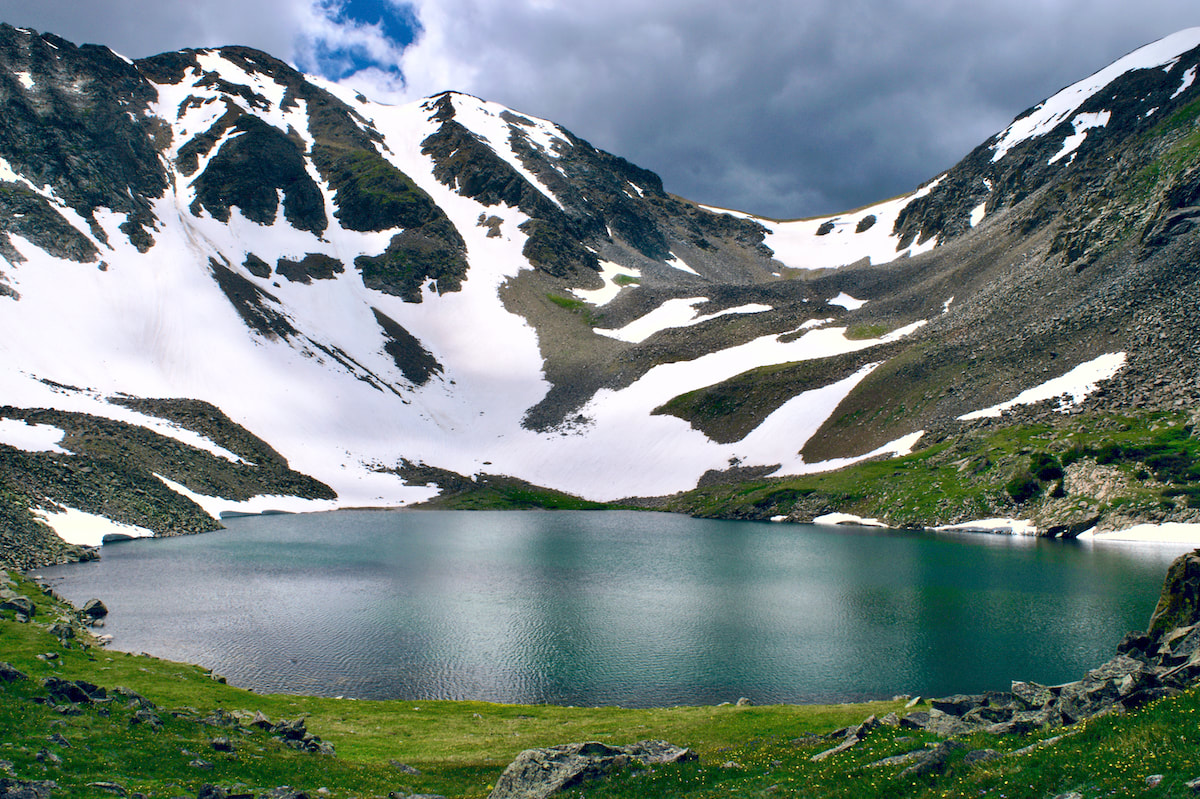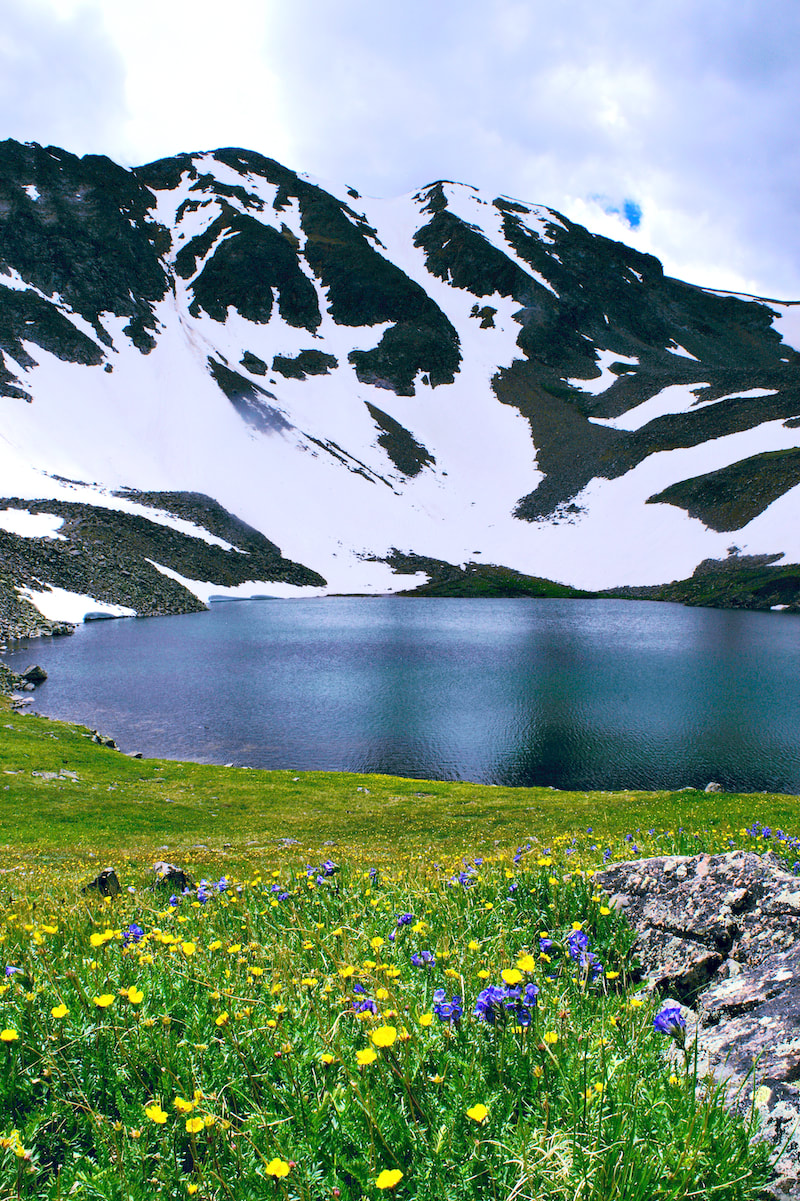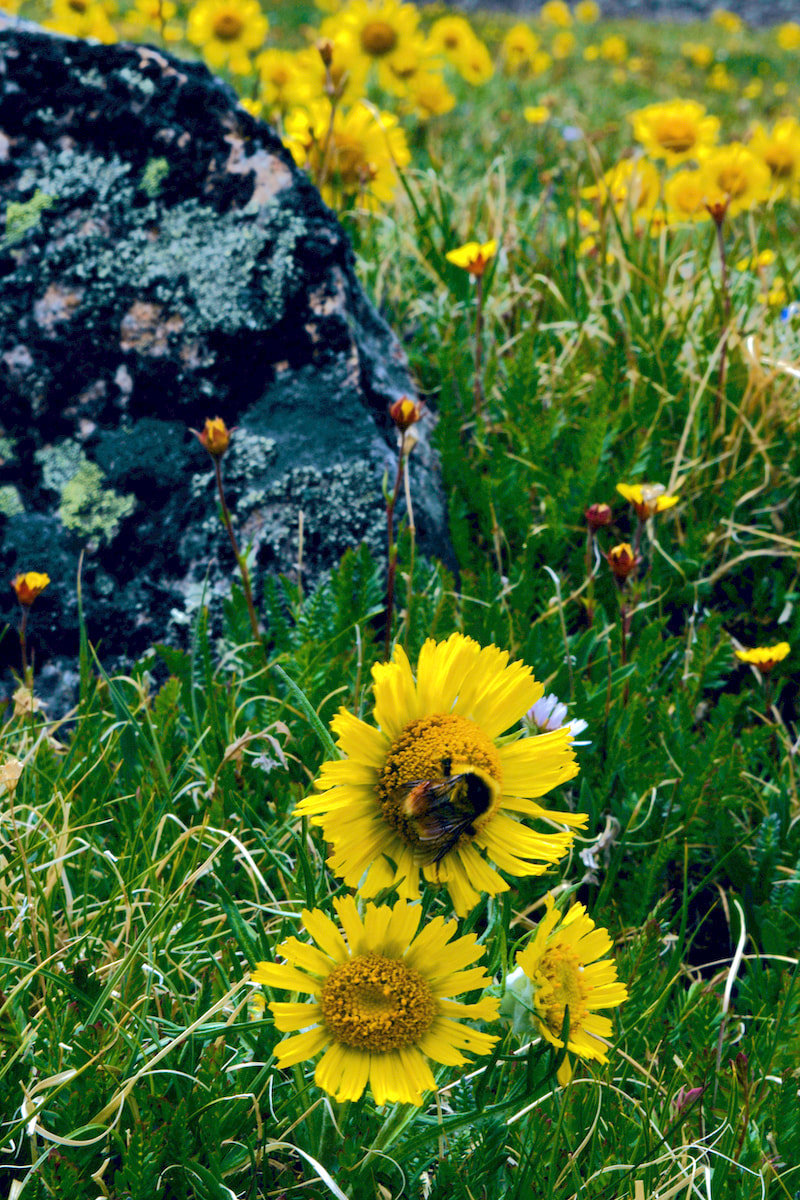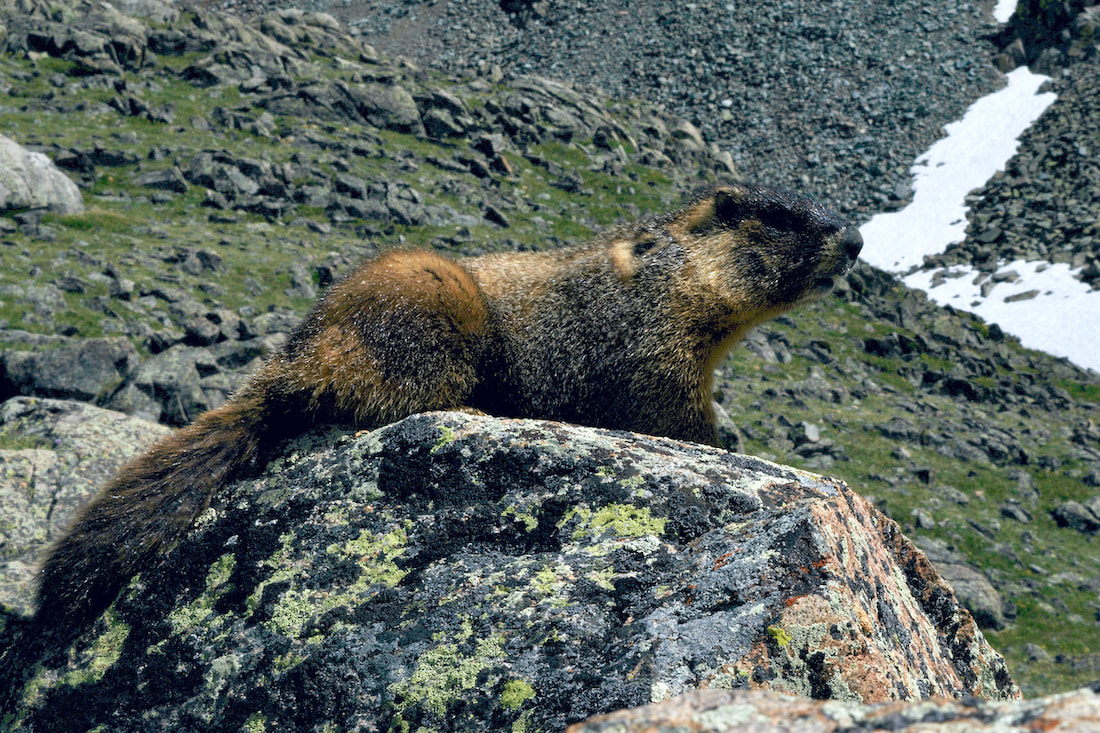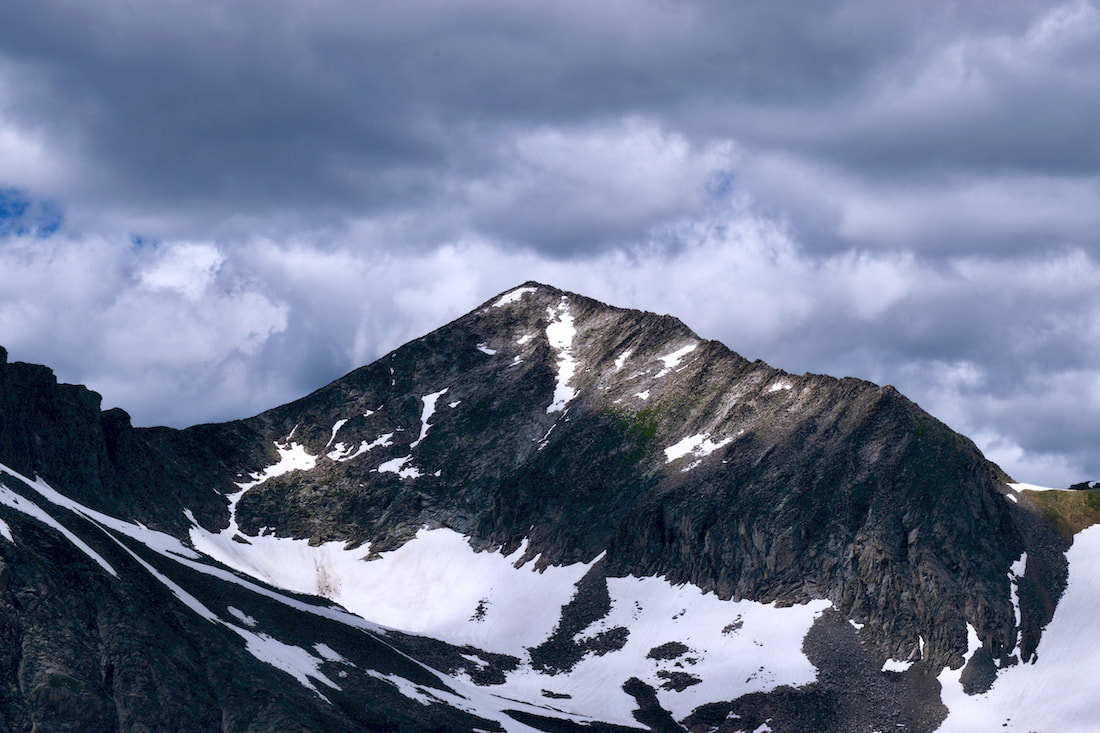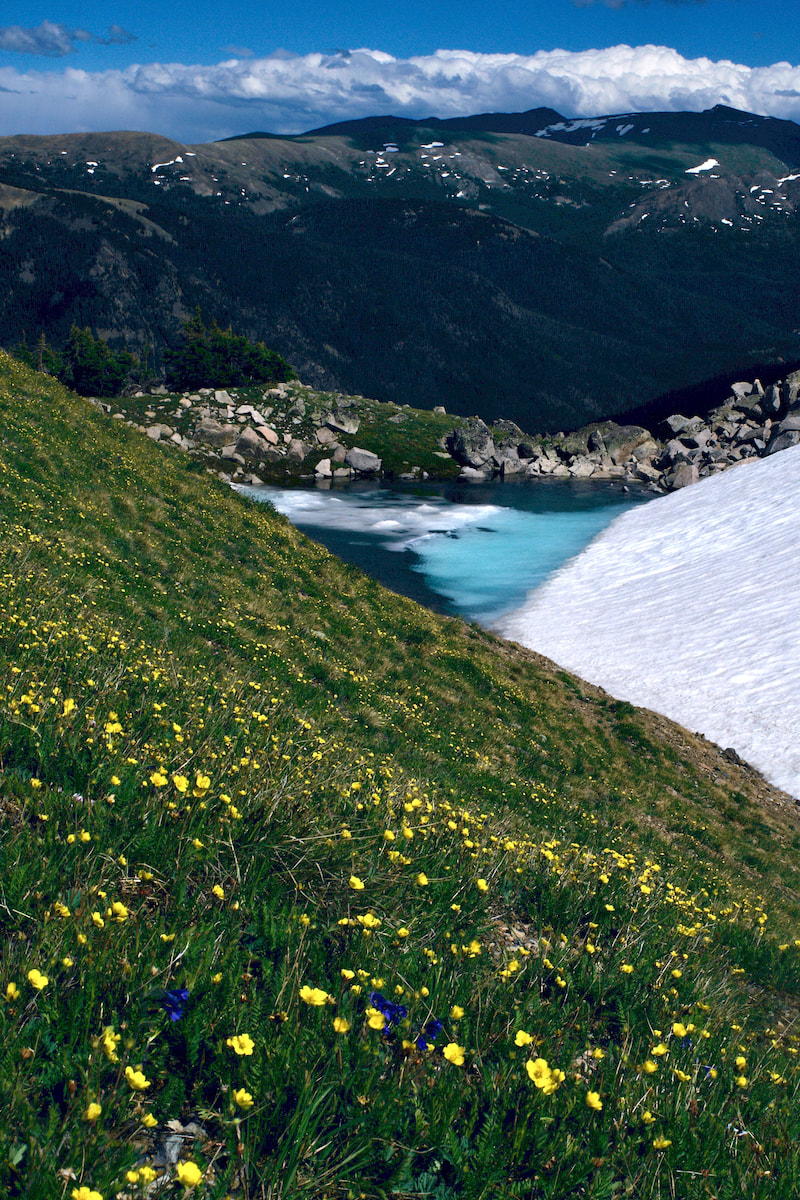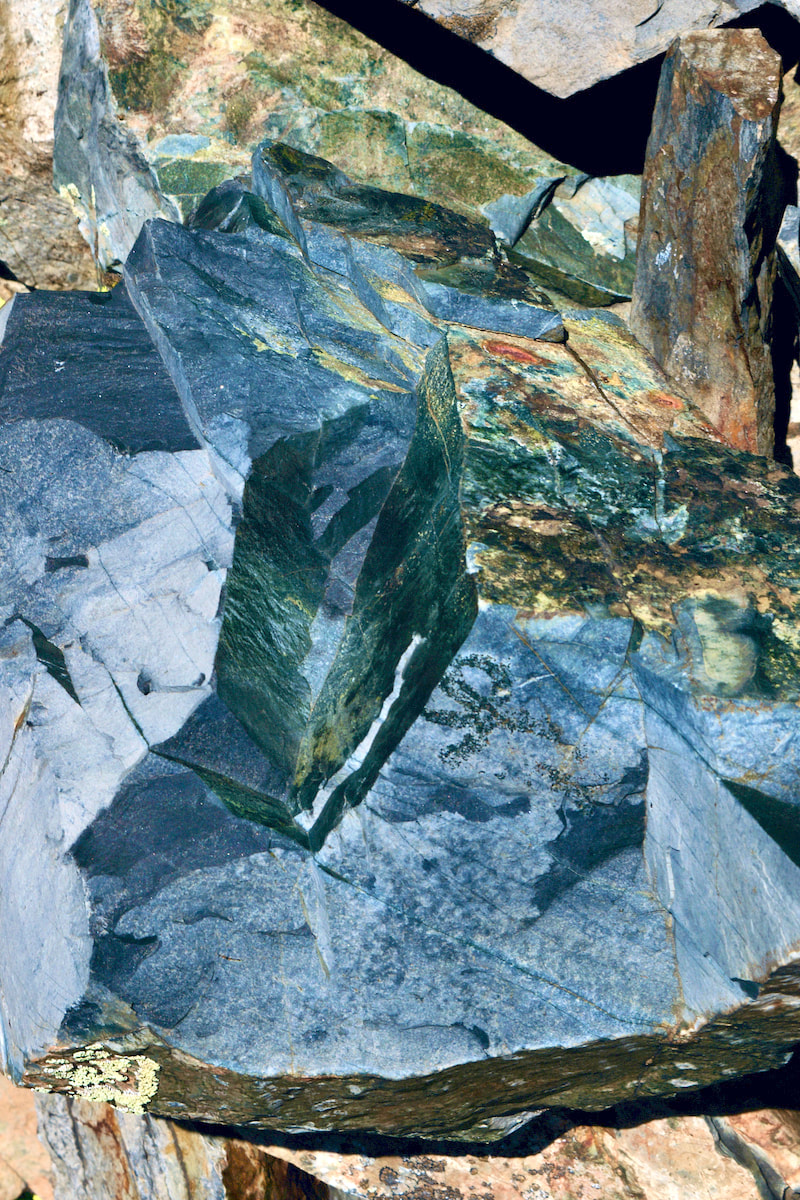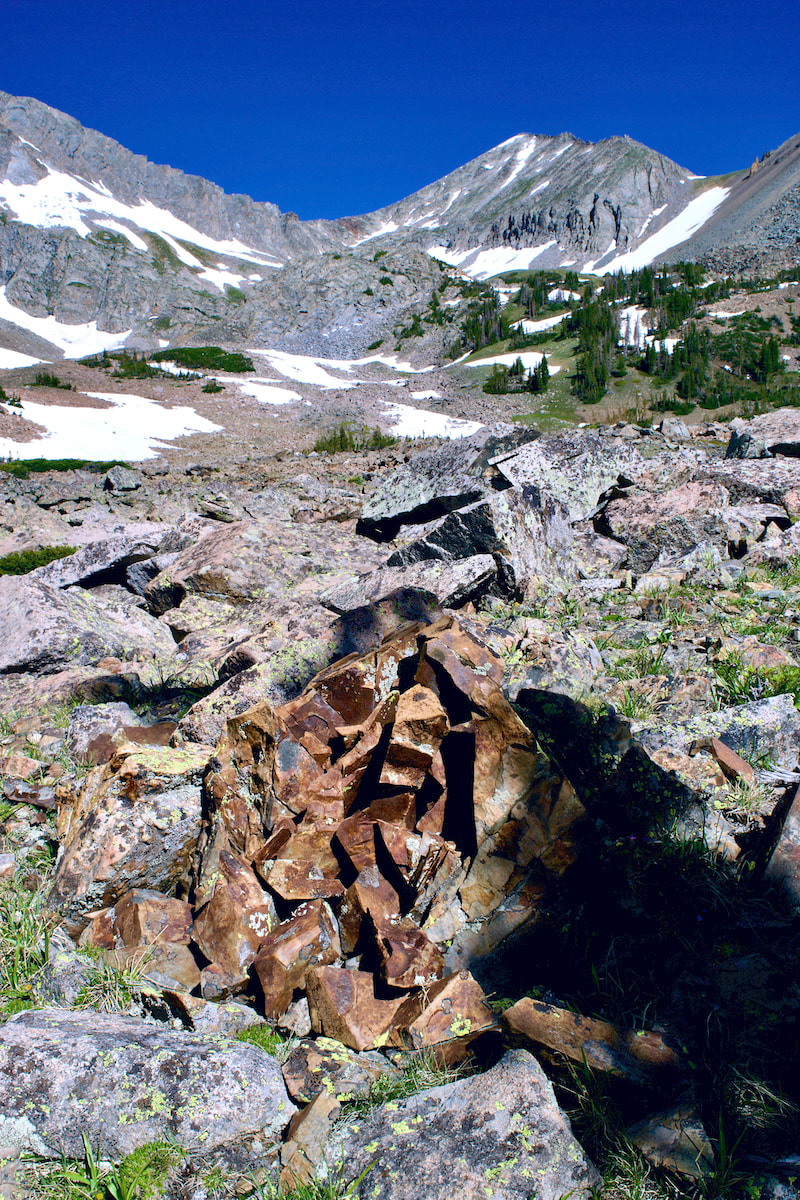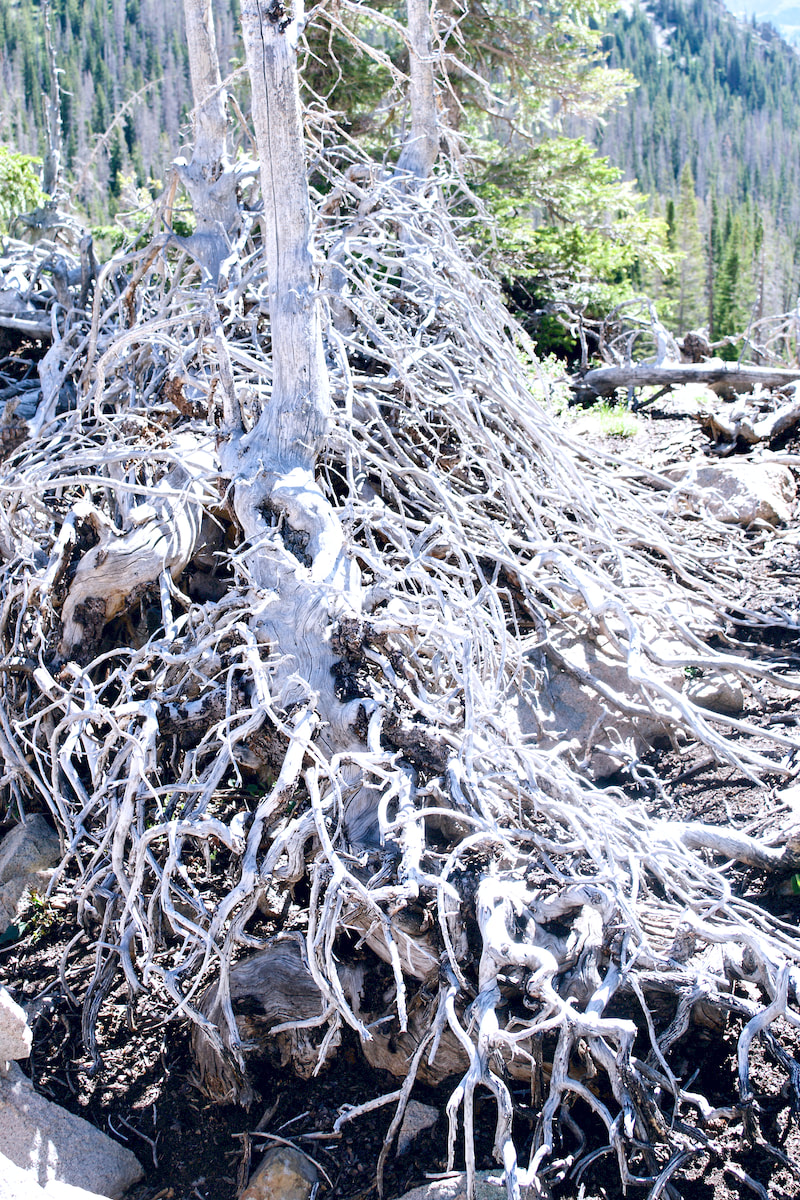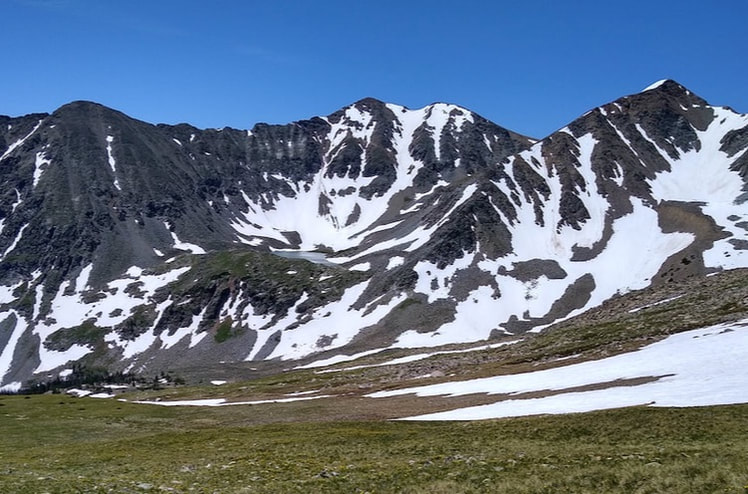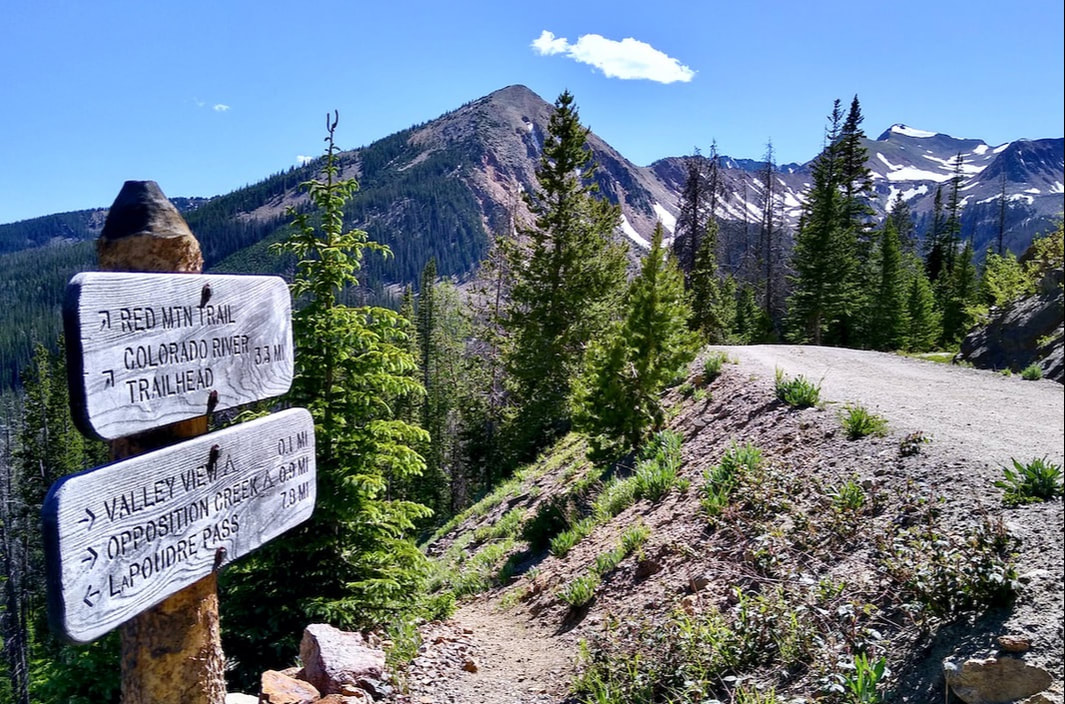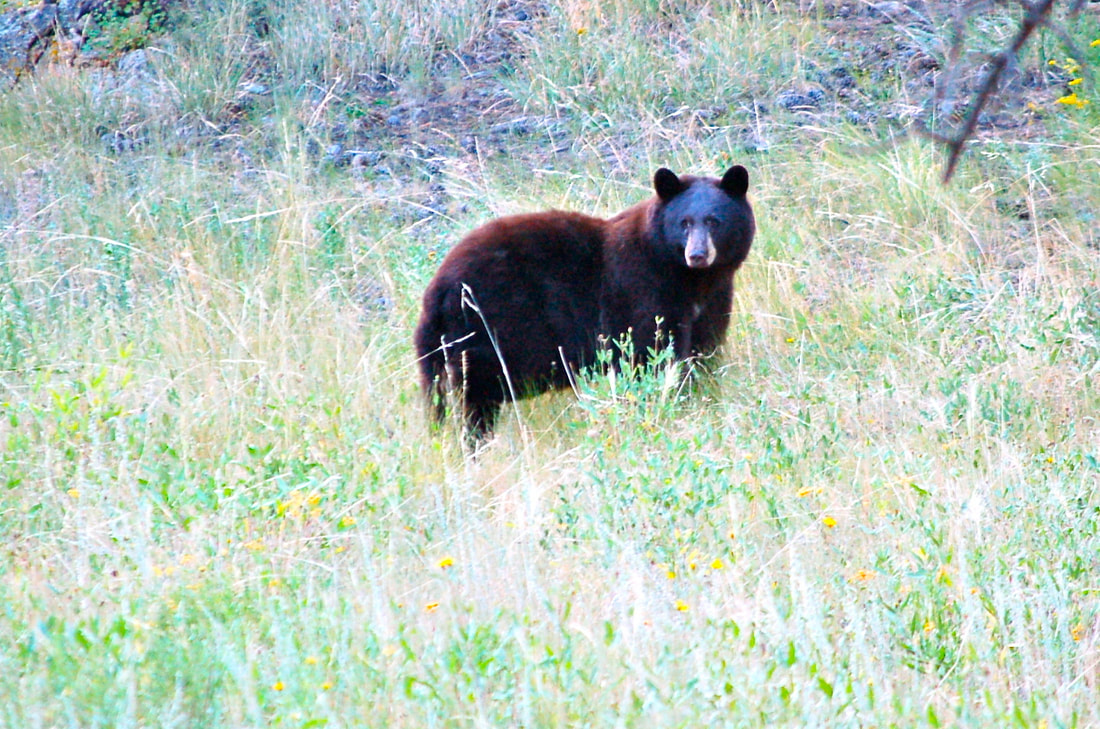|
Notes from the
Trail |
|
Story and photos by Barb Boyer Buck Every summer, I eagerly anticipate the reopening of Old Fall River Road in Rocky Mountain National Park. It usually happens around July 4, depending on weather. This dirt road travels one-way up to the top of the pass, emptying out at the back of the Alpine Visitor’s Center parking lot and Trail Ridge Road (that’s how you get back down). In places, the grade is as steep at 16% and switchbacks on the road can reach as tight as 20 degrees radii. It’s narrow and rocky, tends to become riddled with fairly deep potholes, and has very steep drop-offs (with no guardrails) on one side for most of the way. Yet, my little 2-door, front-wheel drive car can manage it easily. In fact, wider and heavier cars have a much more difficult time. For the time being with my knees in rehab, this is my favorite way to access the sub-alpine forest, which is at its most beautiful this month and next. Every week, the sights, smells, and sounds are different, making it a shame to limit yourself to just one trip. The road closes when the first snows start accumulating at that elevation, usually at the beginning of October. September is a beautiful month to drive it as well, with the aspen leaves in full color (not just gold, but often orange and red, too) and the tundra becomes a sea of rust-gold. Old Fall River Road travels from Endovalley (near the Alluvial Fan), where it passes through several ecosystems as you travel up. These include the montane, subalpine, and alpine. In some spots, rich riparian areas offer a rare east-side Rocky look at the sights and sounds of this ecosystem. You move from dense forests to tundra in only 11 miles. This will be one of the longest 11-mile drives you will take. But especially if you’re used to city traffic logjams, you couldn’t ask for a more pleasant delay. There are plenty of places to stop and I recommend stopping at all of them, if you can. The first major attraction is Chasm Falls. This amazing water feature can be seen with a very short hike from the pullout, making it a rare experience for everyone. These types of waterfalls are common in the backcountry, especially just before you approach treeline, accessed by arduous hiking in most cases. There is a spectacular hike (as I remember, I hiked it long ago) that can be accessed from this road at Chapin Creek Trail. There is space for approximately 10 cars in the pullout for the trailhead, so it’s best to go up very early. This trail is 6.6 miles to Chapin Meadows (at the base of Mount Chapin), where it splits to the Mummy Range trail. Several spots to pullout include limited access (foot traffic only) to beautiful forests and the Fall River, which follows the road for most of the way up. Glorious wildflowers, wildlife, lush forests and stunning views greet you the entire way. When its approximately three months of vehicle access is over, you can hike or bike this road (weather permitting). Of course, I love the sights and sounds I witness from my car & the short hikes I do when I stop at certain places. But just as enthralling to me is the rich history of this road. Construction of the road began in 1913 and lasted seven years, with a brief interruption caused by World War I in 1914. When it was finally finished, it connected Estes Park to Grand Lake. When Rocky Mountain National Park was dedicated in the Fall River Valley in 1915, attendees could observe men, using only hand tools, widening the path that Native Americans had weathered for 10s of thousands of years. This actually caused an issue for some of the more refined and prominent representatives at the RMNP dedication. Because at the time, Colorado State Penitentiary inmates, housed in nearby cabins, were the men building the road. (A construction company took over building the road before it was fully extended to Grand Lake.) Congressmen, Colorado’s governor, prominent local businessmen, and local women associations attended the dedication; seeing the convicts carving out the road was the not the proper aesthetic and the men could be dangerous, some thought. In my opinion, seeing slave labor at work was not very palatable for the higher-ups of the time. Another important part of the road’s history is its association to the end of Estes Park’s grand old hotels. Before Fall River Road was opened in 1920, people who came to Estes Park had reached the end of the road, so to speak. They couldn’t travel farther west than Rocky Mountain National Park’s east-facing mountains, unless they climbed over. Hotels on the east side of RMNP such as Elkhorn Lodge (built in 1874), Stanley Hotel (1909), the Crags Lodge (1914), the Baldpate Inn (1917) were designed to have everything a visitor could need. Lodging, food, entertainment, opportunities to relax, and starting points for hunting trips or wildflower gathering were provided by these lodges. (These days hunting and gathering of anything is illegal in Rocky Mountain National Park, it’s a federal crime.) But after Fall River Road finally opened to create vehicle access from Estes Park to Grand Lake, the story changed a bit. Eventually, Estes Park was not the place to stay for weeks or months at a time; it was a place to stop for a few days on the way to points west. Grand Old Hotels gave way to roadside motels, especially in the 1950s and 60s when vehicle travel became America’s favorite pastime. Do yourself a favor and make Old Fall River Road part of this summer's adventure in Rocky Mountain National Park. Be sure your vehicle does well in high altitudes, has a full tank of gas, and my advice is not to drive large vehicles up it, it’s much more difficult that way. But above all, remember it’s only ONE WAY, going up – you will have to take Trail Ridge Road to go back down, either to Estes Park or Grand Lake.
0 Comments
"Little and Big Dutch Creeks remind us of eight Germans who formed a clique in Lulu City, as did groups of Irishmen and Swedes. Each nationality had a nickname, the Germans being known as Dutch. One night the Dutchmen, home from a spree at Grand Lake, started a free-for-all in Lulu. When the smoke cleared away, the townspeople found much damage, including a broken arm on a respectable woman. Blaming the Dutchmen, the majority of citizens ordered them out of town. The Germans climbed to the west, settling two miles above on Big Dutch Creek." ~ High Country Names, 1972 The hike to Lake of the Clouds is rich in beautiful scenery as well as history. It is located in the Never Summer Range on the west edge of the Park.
In the early part of the summer season, a large and steep snowfield covers over the rocky trail. Though a thin layer of soft snow may make crossing this snowfield appear safe, there's still hard ice underneath and it is quite easy to take a fast, hard slide into the boulders below. Crampons are the safest way to travel here. Lake of the Clouds is large and sits at the base of Howard Mtn and Mt Cirrus The glaciated moraine that holds the lake is covered with alpine wildflowers, such as Alpine Avens and Sky Pilots. A small snowmelt pond with views to the east and Mt Ida. There's some very interesting geology in the basin, with very decorative rocks and boulders. Looking south across the Lead Mtn basin to Howard Mtn and Lake of the Clouds. The trail off of The Grand Ditch that leads back to the trailhead. By Barb Boyer Buck Rocky Mountain National Park is a wonderland of high-country wilderness. Millions of people from all over the world travel here to experience the beautiful scenery and hike trails every year. Summer is the most pleasant in RMNP with burgeoning wildflowers, a plethora of varied wildlife, and stunning weather – but it’s very important to keep in mind safety concerns and take the proper precautions.
experience, skill, and the proper equipment. Bouldering (climbing without ropes) is properly done only with crash pads & spotters. The best advice would be to keep from scrambling on the rocks at all if you don’t have consistent experience doing so, especially for young children. Wildlife Safety Few things are more exciting than seeing a wild animal in its natural habitat, especially if they have offspring with them. But even though Rocky’s wildlife has become habituated to the presence of humans, serious altercations can – and do! – occur when the proper precautions are not taken.
Preparing for changing conditions. If you’ve ever visited Rocky Mountain National Park in any season of the year, you have probably experienced a sudden thunder-storm that clears up within minutes, or have been pelted with hail only to be unbearable hot shortly after, when full sun emerges again. Weather is extremely changeable and unpredictable in the Rocky Mountains. Lightening strikes happen every year in Rocky, in every location. There are many areas in the park that allow hiking above or at treeline which increases the chances of being struck. Watch for storm clouds forming and plan for reaching shelter if the weather suddenly shifts. Wear layers, including a hat, to protect against the sun even if it is cloudy. Sunscreen is essential as you are about two miles closer to the sun than if you were at sea level. Sunburns can happen even if it’s overcast. Wear the proper footwear and plan for changing trail conditions. A dry, dusty trail can suddenly shift to a snow-packed one and regular hiking boots may not be adequate. Bring boot spikes or snowshoes (in the winter) along with you on your hikes.
Stay away from snow patches on inclines as these can give way to avalanches, any time of the year. Check with a ranger about the level of avalanche danger. Rocks and trees are not always stationary! Things that can cause a tree to fall unexpectedly include damage to the tree itself through fire or flood, disease, and high winds. Rocks can be dislodged by human and wildlife activity. Rockslides are possible in these situations. Streams, lakes, and waterfalls are beautiful and look very inviting. However, rushing streams can be very dangerous, rivers and lakes can be deeper than they look and waterfalls can contain debris. Streamside rocks are often slippery, so special care needs to be taken with children, especially young ones. Untreated water in Rocky Mountain National Park is not safe to drink.
Electrolytes also help replenish what high elevation depletes from your body. People with existing health conditions such as heart and lung disease should be very careful as they ascend in elevation. Hypothermia is a very real danger in almost every season in Rocky. Symptoms are sleepiness, impaired judgment, slurred speech and shivering. Lack of data reception You can't count on your phone to communicate dependably, or internet service while in RMNP. Be sure someone outside the Park knows where you are and when you expect to return. Protect from getting lost while hiking Rocky by downloading our free app, which utilizes GPS to power its trail maps, available here: GPSMyHike.com A "perfect" day in RMNP can turn into a serious situation quickly, so be sure to follow these basic safety precautions while visiting this beautiful national treasure. |
"The wild requires that we learn the terrain, nod to all the plants and animals and birds, ford the streams and cross the ridges, and tell a good story when we get back home." ~ Gary Snyder
Categories
All
“Hiking -I don’t like either the word or the thing. People ought to saunter in the mountains - not hike! Do you know the origin of the word ‘saunter?’ It’s a beautiful word. Away back in the Middle Ages people used to go on pilgrimages to the Holy Land, and when people in the villages through which they passed asked where they were going, they would reply, A la sainte terre,’ ‘To the Holy Land.’ And so they became known as sainte-terre-ers or saunterers. Now these mountains are our Holy Land, and we ought to saunter through them reverently, not ‘hike’ through them.” ~ John Muir |
© Copyright 2025 Barefoot Publications, All Rights Reserved
